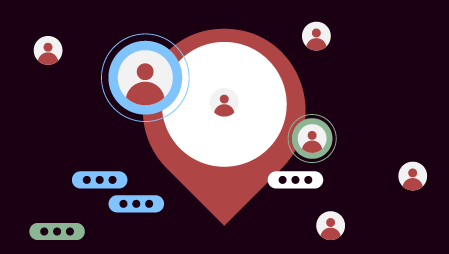As the world unexpectedly embraced work from home models this spring, home offices and video call backgrounds have become a hot topic. Social media, business articles, and even reputable brands are all buzzing about what our new residential workspaces look like; but no one is talking about how they should perform, and the omission of that single topic could be putting our national workforce at risk.
Established in 1971, the US Occupational Safety and Health Administration (OSHA) was established to reduce workplace injuries, and has been silently protecting professionals for the half-century since. Maybe too silently. While many physical labors regularly receive occupational safety training, most office workers have absolutely no idea how many hundreds of hours and millions of dollars are invested into making their office environments OSHA-compliant. They’re unaware the light bulbs are carefully selected to be a specific wattage, desk and chair heights are controlled, extra electrical outlets are installed specifically to eliminate cord clutter, even monitor size and placement on each desk is strategically calculated to prevent harm or accidents.
All of those seemingly small details add up to the short- and long-term protection of the workplace occupants, saving both the employer and the employee the financial and physical costs of injury. But most office professionals have no idea about occupational safety regulations. The meticulous design and construction is taken for granted, and the professionals go about their work days, completely oblivious to the figurative bubble wrap around them.
Bob Nichols, Occupational Safety Attorney and Partner at Bracewell explains, “There are inherent safety benefits to working from home, especially the decrease of traffic accidents on expressways during high commuting hours. But those automatic rewards, along with previously-existing resources, are the only support we can expect for now. In terms of enforcing and regulating safety criteria in offsite workspaces, we’re not going to see a solution from OSHA and other federal agencies for a while.”
How do we protect ourselves and our teams in the meantime? Thankfully, Telework.gov offers a Home Office Safety Checklist to get us started and open our eyes about the most common dangers for work-from-home professionals:
- Tripping Hazards and Cord Placement – Without the luxury of a corporate electrician designing and installing our outlets, it’s common to have cords and extension cords snaking around our desk or accidentally placed to heat sources. Not to mention household additions like children, pets, or laundry.
- Shock and Fire Hazards – Mismanaged power cords, outlets, paper clutter, and a lack of an accessible fire extinguisher could put your entire household and neighborhood in danger.
- Lighting and Glare – Your audio and visual health is important too, and in a work environment that is so dependent on screens and headsets, it’s a topic remote workers can’t escape.
- Ergonomics – Sitting might sound relaxing, but working in a sedentary position with improper support for your back, knees, and wrists for 8 hours each day can result in extreme injuries over time.
Lest you believe that this topic is irrelevant to you, here’s a reality check. I’ve been a remote worker for 13 years, remote work thought leader for three, I have a professional background in both office management and corporate interior design, am the founder of the world’s top consulting firm specializing exclusively on virtual jobs, and write remote work policies that include extensive sections about workplace safety requirements. All of that is to say, I’ve thought about this topic extensively and have taken extra measures to create a dedicated, ergonomic workspace in a spare bedroom of my home. But while writing this article, I took 5 minutes to inspect my office using the checklist from Telework.gov. Guess what? On the list of 34 criteria, I didn’t comply with 11 of them. That’s over one third of the regulations! Chances are if a telework expert is unknowingly at such a dangerous level of noncompliance, you and the rest of your staff are too.
So, how do we fill the gap? The change management process of implementing a compliance plan can take months, and you don’t want to put yourself or your company at risk of a worker’s compensation claim in the meantime.
Here are 3 steps that you can implement in less than a week to get you and your team on the road to workplace safety and compliance:
- Start the conversation – Ignorance is the biggest culprit of this problem, so take some time to create some training materials or activities about the topic. People are less likely to participate if they feel pressured, guilty, overwhelmed, or embarrassed, so keep the topic light and the engagement fun.
- Allocate a stipend for office enhancements – Times are tough right now, so your team may not be willing or able to invest in an ergonomic chair or surge protector out of pocket. Make it easier for them to follow through by footing the bill.
- Schedule regular checks – Protecting your team isn’t a temporary issue, your maintenance and enforcement shouldn’t be either. Coordination with your human resources and facilities departments to make a long-term plan, including quarterly inspections.
It’s probably only a matter of time before we see a home office renovation show on HGTV, but in the meantime, it’s up to you to create a workspace that can both fuel your productivity and protect you as a valuable asset of your company. But remember that the key to corporate design is as much about safety and sustainability as aesthetics. Please, design responsibly.





Like!! Great article post.Really thank you! Really Cool.